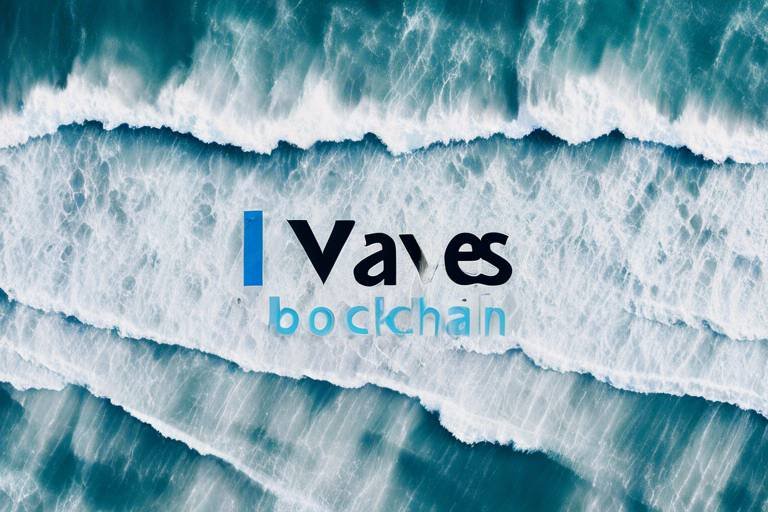Dfyn - Automated Market Maker Insights
In the ever-evolving world of decentralized finance (DeFi), Dfyn emerges as a standout player, offering innovative solutions that redefine the trading experience. As an automated market maker (AMM), Dfyn enables users to engage in trading without the need for traditional order books, making the process more accessible and efficient. But what exactly does that mean for the average trader? Let's dive into the key features, benefits, and challenges associated with Dfyn, exploring how it enhances decentralized trading.
Automated market makers have revolutionized the way we think about trading. Imagine a world where you can swap your digital assets without waiting for someone else to place a matching order—this is the beauty of AMMs. Instead of relying on a centralized exchange with order books, AMMs use smart contracts to facilitate trades directly between users. They operate by utilizing liquidity pools, which are collections of funds that traders can draw from or contribute to. This not only streamlines the trading process but also empowers users to take control of their assets, making it a pivotal component of the DeFi ecosystem.
Dfyn is not just another AMM; it comes packed with features that set it apart from the competition. One of its most exciting aspects is its innovative liquidity pools. These pools allow users to provide liquidity and earn rewards, creating a win-win scenario for both the platform and its users. Additionally, Dfyn offers yield farming opportunities that incentivize users to lock up their assets for greater returns. But wait, there's more! Dfyn also boasts cross-chain capabilities, enabling seamless trading across multiple blockchain networks. This feature not only enhances liquidity but also broadens the trading options available to users, making Dfyn a versatile choice in the DeFi landscape.
At the heart of Dfyn's functionality are its liquidity pools. When users provide liquidity, they are essentially depositing their assets into a smart contract. In return, they receive a share of the trading fees generated from transactions within that pool. This mechanism not only incentivizes users to contribute their assets but also stabilizes the market by ensuring that there are always funds available for trading. The more liquidity in the pool, the less price slippage traders experience, leading to a more efficient trading environment. In essence, liquidity pools are the lifeblood of Dfyn, ensuring that users can trade with confidence.
Yield farming is where the magic happens for many users on Dfyn. By participating in yield farming, users can earn additional rewards on top of the trading fees from liquidity pools. Dfyn offers various strategies for yield farming, allowing users to choose the approach that best suits their risk tolerance and investment goals. Whether you're a seasoned investor or a newcomer, there's a strategy for everyone. This not only enhances user engagement but also fosters a sense of community as participants share tips and tricks to maximize their returns.
One of Dfyn's standout features is its cross-chain functionality. In a world where multiple blockchains coexist, the ability to trade assets across different networks is a game-changer. Dfyn enables users to seamlessly swap tokens from one blockchain to another without the hassle of complex processes. This not only increases liquidity but also opens up a broader range of trading pairs, ultimately enhancing the user experience. Imagine being able to trade Ethereum for Binance Smart Chain tokens in just a few clicks—Dfyn makes this possible!
When it comes to trading platforms, user experience is key. Dfyn recognizes this and has designed an interface that is both intuitive and engaging. Whether you're a novice just dipping your toes into DeFi or a seasoned trader, navigating Dfyn's platform is a breeze. The layout is clean, with essential tools and information readily accessible. This focus on usability not only attracts new users but also retains experienced traders who appreciate a smooth trading experience.
Despite its many advantages, Dfyn is not without challenges. The world of decentralized finance is fraught with risks, and users need to be aware of them. Issues such as impermanent loss, smart contract vulnerabilities, and market volatility can pose significant threats to users' investments. Understanding these risks is crucial for anyone looking to engage with Dfyn or any other AMM in the DeFi space.
Impermanent loss is a term that often sends shivers down the spine of liquidity providers. It occurs when the value of assets in a liquidity pool fluctuates, leading to potential losses compared to simply holding the assets. However, Dfyn users can implement strategies to mitigate this risk, such as choosing stablecoin pairs or diversifying their investments across multiple pools. By being mindful of these factors, users can maximize their returns while minimizing the impact of impermanent loss.
Smart contracts are the backbone of Dfyn's functionality, but they can also be susceptible to hacks and bugs. This is why security audits are paramount. Dfyn takes the security of its users seriously and conducts thorough audits to identify and address potential vulnerabilities. By ensuring that their smart contracts are robust and secure, Dfyn helps protect user assets and fosters trust within the community.
- What is Dfyn? Dfyn is an automated market maker (AMM) that allows users to trade tokens without traditional order books.
- How do liquidity pools work? Users provide assets to liquidity pools and earn rewards based on the trading fees generated.
- What is yield farming? Yield farming allows users to earn additional rewards by locking up their assets in liquidity pools.
- What are the risks of using Dfyn? Risks include impermanent loss, smart contract vulnerabilities, and market volatility.
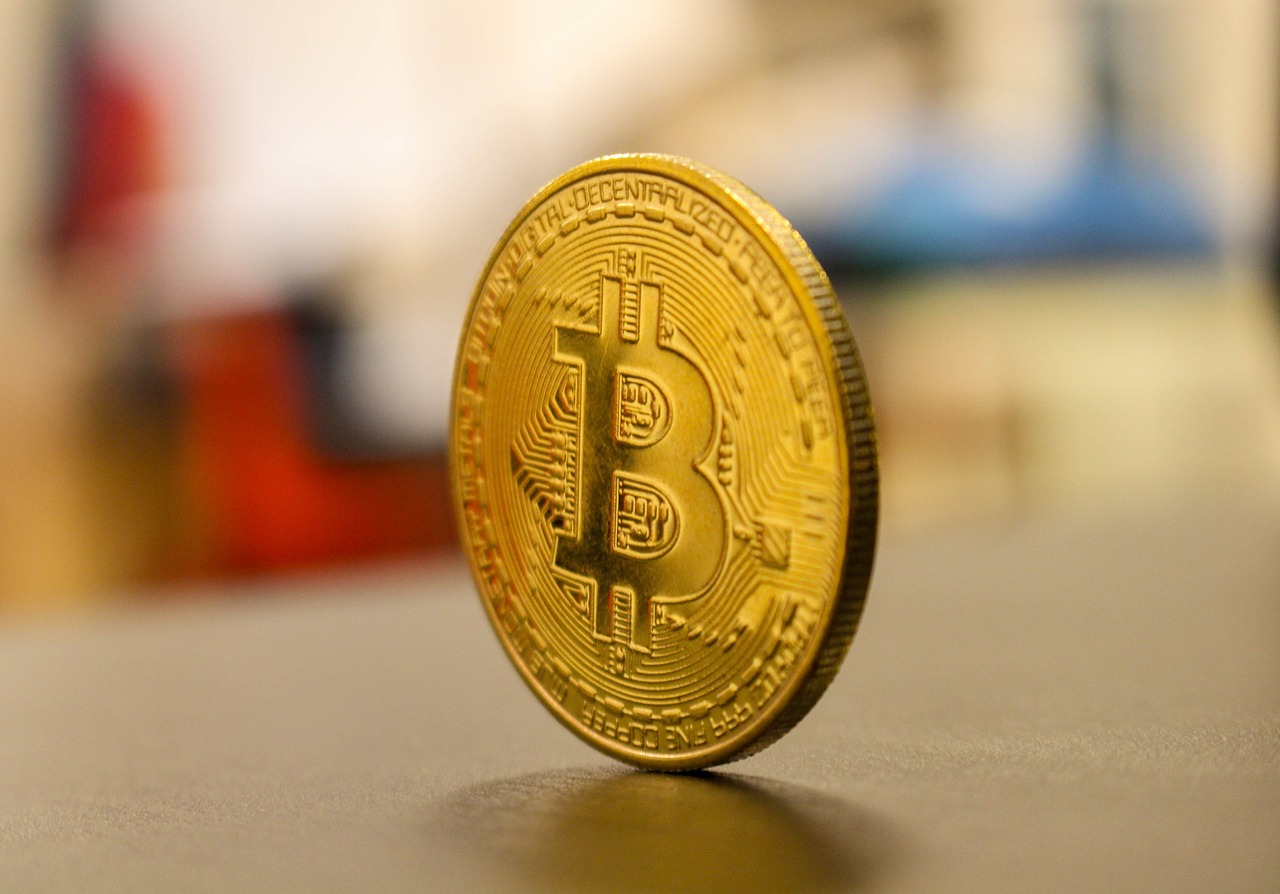
Understanding Automated Market Makers
Automated market makers (AMMs) are a groundbreaking innovation in the world of finance, particularly within the realm of decentralized finance (DeFi). Unlike traditional exchanges that rely on order books to facilitate trades, AMMs utilize algorithms to set prices and allow users to trade assets directly against liquidity pools. This shift from conventional trading methods to AMM models has made trading more accessible and efficient for users around the globe.
So, how do AMMs actually work? At their core, AMMs employ smart contracts that hold liquidity pools—collections of funds that are locked in a contract. These pools are funded by users who provide their assets in exchange for a share of the transaction fees generated within the pool. This mechanism not only incentivizes liquidity providers but also creates a seamless trading experience for users. When someone wants to make a trade, they interact with the AMM, which automatically calculates the price based on the current state of the liquidity pool, ensuring that trades can occur without the need for a counterparty.
The significance of AMMs in the DeFi ecosystem cannot be overstated. They democratize access to trading, enabling anyone with an internet connection to participate in the financial markets without the barriers typically associated with traditional exchanges. Moreover, AMMs facilitate a more efficient price discovery process, as the prices are determined by the supply and demand dynamics within the liquidity pools. This creates a more fluid and dynamic trading environment that can adapt to market changes in real-time.
One of the most exciting aspects of AMMs is their potential to foster innovation in financial products. For instance, users can engage in yield farming, where they earn rewards for providing liquidity, or participate in governance protocols that allow them to have a say in the future of the platform. However, while the benefits are compelling, it’s essential to recognize that AMMs also carry inherent risks, such as impermanent loss and smart contract vulnerabilities. As we delve deeper into the world of Dfyn and its unique features, understanding the foundational principles of AMMs will provide valuable context for their role in the evolving landscape of decentralized trading.

Dfyn's Unique Features
Dfyn is not just another automated market maker; it brings a plethora of unique features that make it stand out in the crowded DeFi landscape. One of its most notable attributes is its innovative liquidity pools, which not only enhance trading efficiency but also engage users in a way that traditional AMMs fail to do. Imagine being able to provide liquidity and earn rewards while you sleep! This is the kind of opportunity that Dfyn offers, making it a dream come true for many crypto enthusiasts.
Another significant aspect of Dfyn is its yield farming opportunities. Users can dive into various strategies that allow them to maximize their returns. The platform is designed to cater to both seasoned investors and newcomers, ensuring that everyone can participate in the yield farming frenzy. For instance, participants can choose to stake their assets in different pools, each with its own risk and reward profile. This flexibility is a game-changer, as it empowers users to tailor their investment strategies based on their individual risk tolerance.
Furthermore, Dfyn’s cross-chain capabilities open up a world of possibilities. In a decentralized finance ecosystem that often feels fragmented, Dfyn bridges the gap between different blockchain networks. This functionality allows users to trade assets seamlessly across various platforms, significantly enhancing liquidity. Imagine being able to swap tokens without worrying about which blockchain they reside on—Dfyn makes this a reality, allowing for a more fluid trading experience.
To give you a clearer picture of how Dfyn’s features stack up against other AMMs, here’s a brief comparison:
| Feature | Dfyn | Other AMMs |
|---|---|---|
| Liquidity Pools | Innovative and user-engaging | Standard pools |
| Yield Farming | Diverse strategies available | Limited options |
| Cross-Chain Trading | Seamless integration | Often restricted to one blockchain |
In summary, Dfyn’s unique features not only enhance user experience but also redefine what it means to engage with decentralized finance. With its innovative liquidity pools, diverse yield farming opportunities, and cross-chain functionality, Dfyn is paving the way for a more inclusive and efficient trading environment. Users can feel empowered knowing they have the tools at their disposal to maximize their investments while enjoying a seamless trading experience.
- What is Dfyn? Dfyn is an automated market maker (AMM) that enhances decentralized trading through unique features like innovative liquidity pools and cross-chain capabilities.
- How do liquidity pools work on Dfyn? Users provide liquidity to the pools and earn rewards in return, which helps stabilize the market.
- What are yield farming opportunities? Yield farming allows users to earn rewards by staking their assets in various liquidity pools with different risk profiles.
- Does Dfyn support cross-chain trading? Yes, Dfyn facilitates seamless trading across different blockchain networks, enhancing liquidity and user experience.

Liquidity Pools Explained
Liquidity pools are the lifeblood of automated market makers (AMMs) like Dfyn. Imagine a bustling marketplace where traders can freely exchange goods without the need for a middleman. That's exactly what liquidity pools do for digital assets. They allow users to provide liquidity by depositing their tokens into a shared pool, which then facilitates trades on the platform. This system not only democratizes trading but also ensures that transactions can occur smoothly and efficiently. When users contribute their assets, they earn a share of the trading fees generated by the trades that utilize their liquidity. It's akin to being a landlord who collects rent from tenants while providing them a place to stay.
In Dfyn, liquidity pools are designed to be both user-friendly and rewarding. Users can choose from a variety of pools, each with its own unique set of tokens. For instance, if you deposit ETH and Dfyn's native token, you might find yourself earning fees every time someone trades between these two assets. The more liquidity you provide, the more fees you can potentially earn. This creates an enticing opportunity for users looking to maximize their returns while contributing to the overall health of the market.
However, it's essential to understand how liquidity pools impact market stability. When a large amount of one asset is withdrawn from a pool, it can lead to price volatility. This phenomenon is known as "slippage," which occurs when the market price of an asset differs from the expected price due to insufficient liquidity. To mitigate this risk, Dfyn employs sophisticated algorithms that help maintain balance within its pools, ensuring that traders can execute their transactions with minimal disruption.
Furthermore, Dfyn's liquidity pools are not static; they evolve with market conditions. The platform continuously analyzes trading patterns and adjusts the incentives for liquidity providers to ensure that the pools remain attractive and profitable. This dynamic approach not only keeps users engaged but also fosters a sense of community among liquidity providers who collaborate to enhance the overall trading experience.
To summarize, liquidity pools on Dfyn are a game-changer in the DeFi landscape, offering users the opportunity to earn passive income while contributing to a vibrant trading ecosystem. As the platform continues to grow, the importance of these pools will only increase, making it crucial for users to understand their mechanics and potential rewards.
- What are liquidity pools? - Liquidity pools are collections of tokens locked in a smart contract that facilitate trading on decentralized exchanges.
- How do I earn rewards from liquidity pools? - By providing liquidity to a pool, you earn a share of the trading fees generated from transactions involving the assets in the pool.
- What is impermanent loss? - Impermanent loss occurs when the value of your assets in a liquidity pool changes compared to holding them in your wallet, potentially leading to lower returns.
- How can I mitigate risks associated with liquidity pools? - Diversifying your assets across multiple pools and regularly monitoring market conditions can help manage risks effectively.

Yield Farming Opportunities
Yield farming has become a buzzword in the decentralized finance (DeFi) landscape, and for good reason. It offers users an exciting way to earn passive income by simply providing liquidity to various pools. Dfyn, as an innovative automated market maker (AMM), has embraced this trend and created a platform where users can maximize their returns through yield farming. But what exactly does this mean for you? Let's break it down.
At its core, yield farming on Dfyn allows users to stake their cryptocurrencies in liquidity pools. In return, they earn rewards that can significantly enhance their overall returns. These rewards often come in the form of the platform's native tokens, which can be traded or reinvested. The process is akin to planting seeds in a garden; the more you plant (or stake), the more you can potentially harvest. However, just like gardening, it requires some understanding and care to reap the best rewards.
One of the standout features of Dfyn's yield farming is its diverse range of liquidity pools. Users can choose from various pairs, each offering different risk and reward profiles. For instance, stablecoin pools typically provide lower returns but come with reduced volatility, while more exotic pairs might offer higher potential rewards but also carry greater risk. This variety allows users to tailor their yield farming strategies to their risk appetite and investment goals.
Furthermore, Dfyn employs a unique mechanism to incentivize liquidity providers. The platform often runs promotional campaigns that boost rewards for specific liquidity pools, enticing users to participate. This can lead to a win-win scenario where liquidity providers earn higher returns while ensuring that traders have access to the assets they need without facing slippage.
To give you a clearer idea of how yield farming works on Dfyn, here's a simple breakdown:
| Liquidity Pool | Token Pair | Annual Percentage Yield (APY) |
|---|---|---|
| Stablecoin Pool | USDT/USDC | 5% |
| High-Risk Pool | ETH/DAI | 20% |
| Exotic Pair Pool | LINK/BTC | 15% |
As you can see from the table, different pools offer varying APYs based on the associated risks. This flexibility empowers users to make informed decisions about where to allocate their funds. However, potential yield farmers should always conduct thorough research and consider market conditions before diving in. After all, the DeFi space can be as unpredictable as the weather!
In conclusion, yield farming on Dfyn presents an attractive opportunity for those looking to earn passive income in the DeFi ecosystem. By understanding the mechanics behind liquidity pools, the risks involved, and the potential rewards, users can effectively navigate their yield farming journey. Remember, while the prospects are promising, it's essential to stay informed and cautious. Happy farming!
- What is yield farming? Yield farming is the process of providing liquidity to DeFi platforms in exchange for rewards, often in the form of tokens.
- How do I start yield farming on Dfyn? To start yield farming on Dfyn, you need to connect your wallet, choose a liquidity pool, and stake your tokens.
- Are there risks associated with yield farming? Yes, risks include impermanent loss, market volatility, and potential smart contract vulnerabilities.
- Can I lose money while yield farming? Yes, while yield farming can be profitable, there are risks involved that could lead to losses.

Cross-Chain Functionality
In the rapidly evolving world of decentralized finance (DeFi), has emerged as a game-changer. Dfyn stands at the forefront of this innovation, enabling seamless trading across various blockchain networks. But why is this feature so crucial? Imagine trying to navigate a bustling marketplace where each vendor operates in isolation—trading would be a nightmare! Cross-chain capabilities break down these silos, allowing users to access a broader range of assets and liquidity pools without the cumbersome need for intermediaries.
At its core, Dfyn's cross-chain functionality allows users to swap tokens from different blockchains effortlessly. This means that whether you're holding Ethereum-based tokens or those from the Binance Smart Chain, you can trade them on Dfyn without worrying about compatibility issues. The technology behind this is often referred to as atomic swaps, which ensure that transactions are executed securely and instantly, eliminating the risk of one party defaulting.
One of the standout benefits of Dfyn’s cross-chain capabilities is the enhanced liquidity it provides. By aggregating liquidity from multiple chains, Dfyn ensures that users can execute trades with minimal slippage. This is particularly beneficial in volatile markets where every second counts. Moreover, this liquidity aggregation means that users can find better prices for their trades, ultimately leading to a more satisfying trading experience.
To illustrate the impact of Dfyn's cross-chain functionality, consider the following table that outlines the advantages:
| Feature | Benefit |
|---|---|
| Seamless Asset Swaps | Trade tokens from different blockchains without hassle |
| Increased Liquidity | Better prices and reduced slippage for trades |
| Wider Market Access | Opportunity to trade a broader range of assets |
| Enhanced User Experience | Streamlined trading process attracts more users |
Furthermore, Dfyn's cross-chain functionality promotes a more inclusive DeFi ecosystem. Users from different blockchain communities can interact and trade without barriers, fostering collaboration and innovation across platforms. This interconnectedness is essential for the growth of DeFi, as it encourages users to explore and utilize various protocols, ultimately enriching the entire ecosystem.
In conclusion, Dfyn's cross-chain functionality not only enhances trading efficiency but also plays a pivotal role in shaping the future of decentralized finance. By breaking down the barriers between blockchains, Dfyn is paving the way for a more integrated and user-friendly DeFi landscape, making it an exciting platform for traders and liquidity providers alike.

User Experience and Interface
The user experience (UX) and interface of a trading platform can make or break a trader's journey, especially in the fast-paced world of decentralized finance (DeFi). Dfyn has taken significant steps to ensure that its platform is not only functional but also inviting and easy to navigate. From the moment you land on the homepage, you’re greeted with a clean design that emphasizes usability. The layout is intuitive, allowing both seasoned traders and newcomers to find their way around without feeling overwhelmed.
One of the standout features of Dfyn's interface is its dashboard. It provides a comprehensive overview of your assets, liquidity pools, and current market trends at a glance. This means you don’t have to dig through multiple pages to find the information you need. Instead, everything is at your fingertips, making trading decisions quicker and more efficient. The use of vibrant colors and clear typography enhances the visual appeal, ensuring that users can focus on what matters most: trading.
Moreover, Dfyn employs responsive design, which means that whether you’re on a desktop, tablet, or smartphone, the experience remains seamless. This adaptability is crucial in today’s mobile-first world, where traders often need to make quick decisions on the go. The mobile interface retains all the functionalities of the desktop version, ensuring that you can manage your trades and liquidity pools anytime and anywhere.
Another aspect that enhances user experience is the educational resources available on the platform. Dfyn understands that many users may be new to the DeFi space, so they provide tutorials, guides, and FAQs that help demystify complex concepts. This commitment to education not only empowers users but also builds a sense of community and trust. The more informed a trader is, the more confident they will feel while navigating the platform.
Furthermore, Dfyn's customer support is commendable. Users can access a variety of support channels, including live chat, email, and a community forum. This multi-faceted approach ensures that any issues are addressed promptly, which is crucial for maintaining a positive trading experience. In the world of DeFi, where every second counts, having reliable support can be the difference between a successful trade and a missed opportunity.
In conclusion, Dfyn's user experience and interface are designed with the trader in mind. The combination of a user-friendly dashboard, mobile responsiveness, educational resources, and robust customer support creates an environment where users can thrive. In the ever-evolving landscape of DeFi, platforms that prioritize UX will undoubtedly attract and retain a loyal user base.
- What is Dfyn? Dfyn is an automated market maker (AMM) that enhances decentralized trading through innovative liquidity pools and cross-chain capabilities.
- How does Dfyn ensure a user-friendly experience? Dfyn focuses on an intuitive interface, responsive design, and educational resources to cater to both novice and experienced traders.
- Can I access Dfyn on mobile devices? Yes, Dfyn is designed with a responsive layout that allows seamless access on desktops, tablets, and smartphones.
- What kind of support does Dfyn offer? Dfyn provides multiple support channels, including live chat, email, and community forums, to assist users with any issues they may encounter.
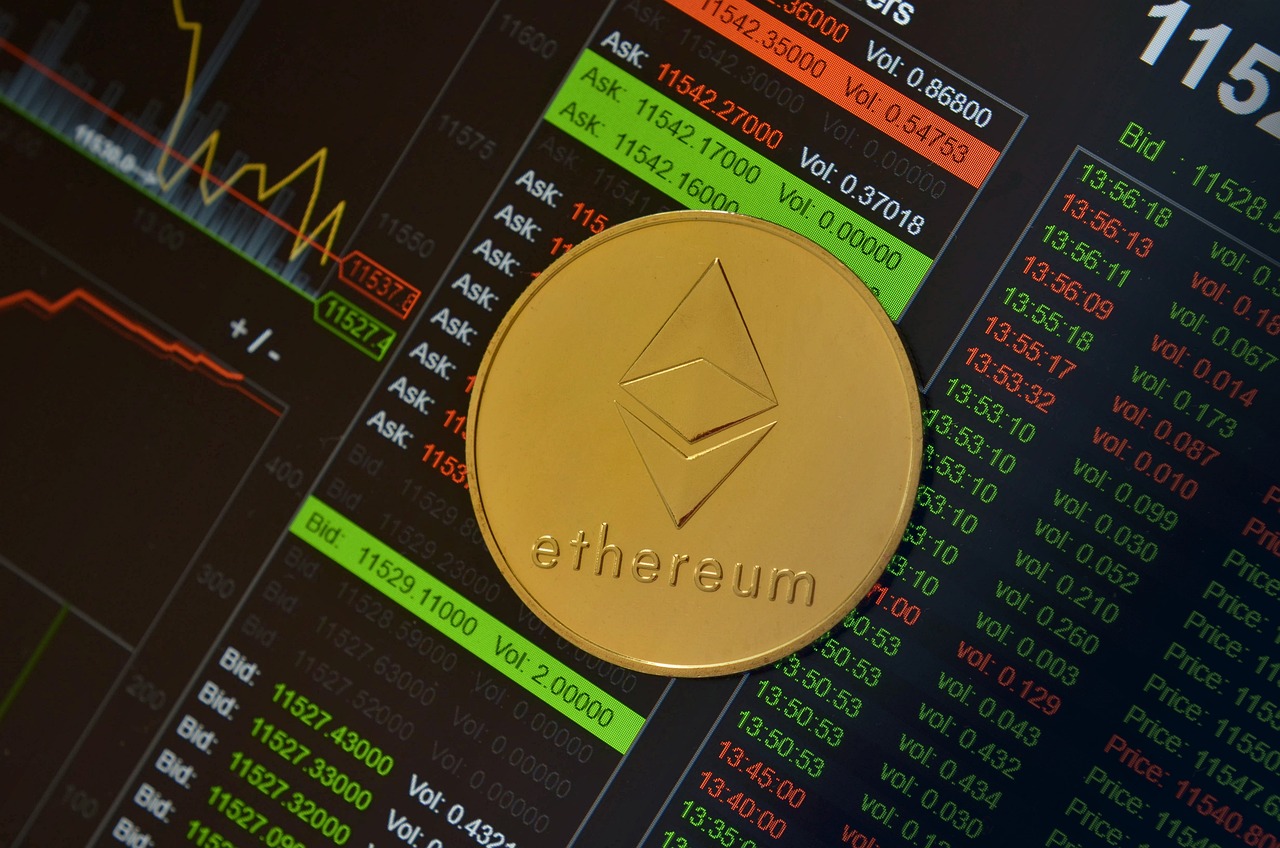
Challenges and Risks
Despite its numerous advantages, Dfyn, like any other platform in the decentralized finance (DeFi) space, is not without its challenges and risks. As the DeFi ecosystem continues to evolve, users must be aware of the potential pitfalls that could affect their trading experience and investment returns. Understanding these risks is crucial for anyone looking to engage with Dfyn and similar automated market makers (AMMs).
One of the most significant risks associated with using Dfyn is impermanent loss. This occurs when the value of the assets in a liquidity pool changes compared to when they were deposited. Imagine you provide liquidity to a pool that includes a volatile asset. If the price of that asset fluctuates significantly, you might end up with less value than if you had simply held onto your assets. While Dfyn has mechanisms in place to help mitigate this risk, it’s essential for users to understand how impermanent loss works and to strategize accordingly.
Another critical concern is the vulnerability of smart contracts. Smart contracts are the backbone of DeFi platforms, automating transactions and processes without the need for intermediaries. However, they can also be susceptible to bugs and hacks. A flaw in the code can lead to significant financial losses for users. To combat this, Dfyn emphasizes the importance of regular security audits. These audits are conducted by third-party firms to identify and rectify potential vulnerabilities before they can be exploited.
Additionally, market volatility presents another layer of risk for users. The DeFi market is known for its rapid price swings, which can result in unexpected losses. Traders and liquidity providers must be prepared for the possibility of sudden market movements that could impact their positions. It’s crucial to stay informed and utilize risk management strategies to navigate these turbulent waters effectively.
To summarize, here are the primary challenges and risks associated with Dfyn:
- Impermanent Loss: Fluctuations in asset value can lead to reduced returns.
- Smart Contract Vulnerabilities: Bugs can cause significant financial losses, making security audits essential.
- Market Volatility: Rapid price changes can affect trading and liquidity provision.
By being aware of these challenges and actively seeking ways to mitigate them, users can enhance their experience on the Dfyn platform. Engaging with DeFi requires a proactive approach to risk management, ensuring that users can enjoy the benefits while minimizing potential downsides.
1. What is impermanent loss, and how can it affect my investments on Dfyn?
Impermanent loss occurs when the value of your assets in a liquidity pool changes compared to when you deposited them. It can lead to lower returns if the market fluctuates significantly. To mitigate this, consider diversifying your assets and monitoring market trends.
2. How does Dfyn ensure the security of its smart contracts?
Dfyn conducts regular security audits with third-party firms to identify and fix vulnerabilities in its smart contracts. This helps protect user assets from potential hacks and bugs.
3. What strategies can I use to manage market volatility while trading on Dfyn?
To manage market volatility, consider setting stop-loss orders, diversifying your portfolio, and staying updated on market news. Understanding market trends can also help you make informed decisions.
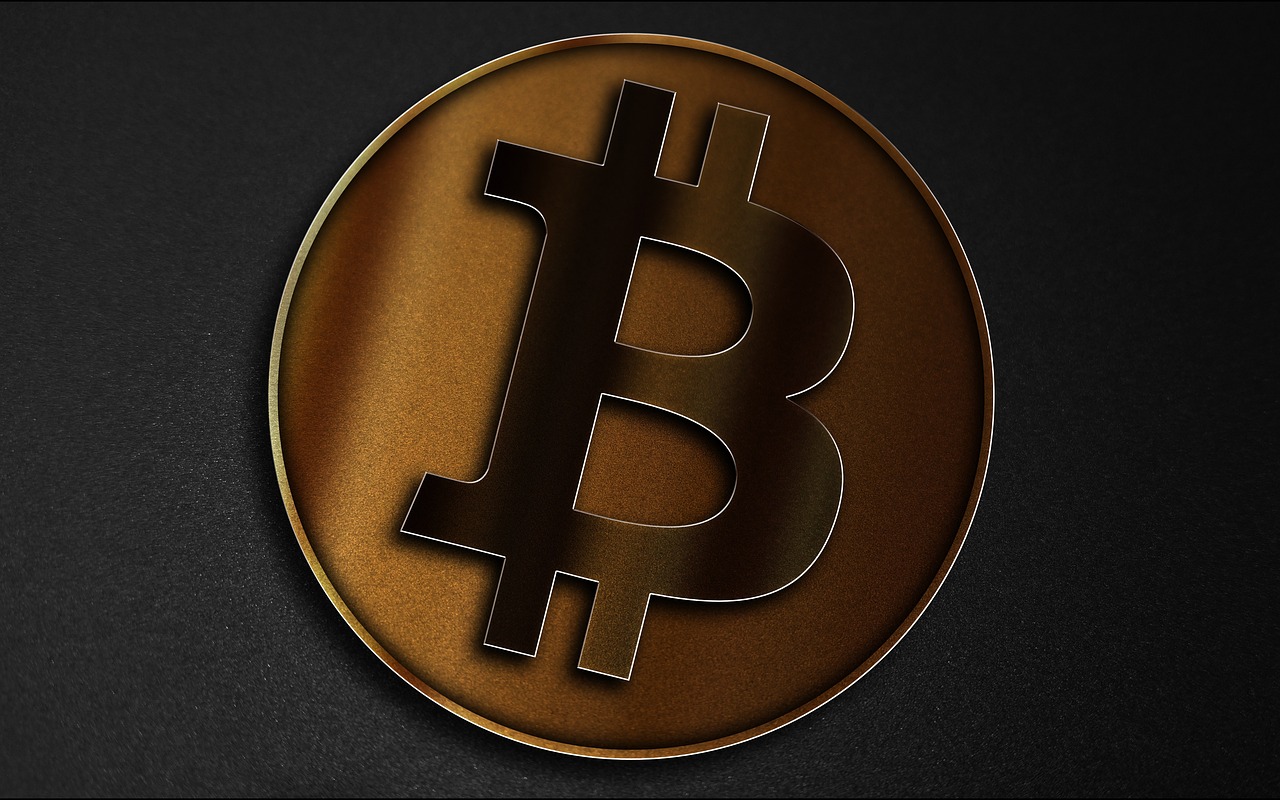
Impermanent Loss Explained
Impermanent loss is a term that might sound intimidating, but it’s essential for anyone venturing into the world of decentralized finance (DeFi) to understand. In simple terms, impermanent loss occurs when the value of assets in a liquidity pool changes compared to when they were deposited. Imagine you have a jar of marbles—some blue (representing one asset) and some red (representing another). If the price of blue marbles increases significantly while they’re in the jar, and you decide to withdraw them later, you’ll end up with fewer blue marbles than you would have if you had simply held onto them instead of providing liquidity. This difference in value is what we call impermanent loss.
In the context of Dfyn, users provide liquidity by depositing pairs of tokens into liquidity pools. When the price of these tokens fluctuates, the ratio of the tokens in the pool adjusts automatically. This automatic adjustment can lead to a situation where the total value of the tokens you receive upon withdrawal is less than what you would have had if you had just held onto them. To illustrate this concept further, let’s look at a simple example:
| Initial Investment | Token A Price | Token B Price | Value at Withdrawal |
|---|---|---|---|
| $100 (50 Token A + 50 Token B) | $1 | $1 | $90 (40 Token A + 60 Token B) |
In this example, the user initially invests $100 by depositing equal amounts of Token A and Token B. However, due to market fluctuations, the total value at withdrawal drops to $90, resulting in a $10 impermanent loss. While this loss is termed 'impermanent' because it can potentially be recovered if the prices return to their original state, it’s crucial for liquidity providers to be aware of this risk.
So, how can Dfyn users mitigate the risks associated with impermanent loss? Here are a few strategies:
- Diversification: By providing liquidity in multiple pools, users can spread their risk across different assets.
- Stablecoin Pools: Investing in pools that contain stablecoins can significantly reduce the risk of impermanent loss since stablecoins are less volatile.
- Monitoring Market Conditions: Keeping an eye on market trends can help users make informed decisions about when to provide or withdraw liquidity.
Ultimately, while impermanent loss is a risk that liquidity providers must consider, it’s just one piece of the puzzle in the broader DeFi landscape. By understanding this concept and employing strategies to mitigate its impact, users can navigate the world of automated market makers like Dfyn more effectively.
What is impermanent loss?
Impermanent loss refers to the temporary loss of funds experienced by liquidity providers due to price fluctuations in the assets they have deposited into a liquidity pool.
Can impermanent loss be avoided?
While it cannot be entirely avoided, users can employ strategies such as diversifying their liquidity pools or investing in stablecoin pools to minimize the impact.
Is impermanent loss permanent?
No, it’s termed "impermanent" because the loss may be recovered if the prices of the assets return to their original levels. However, if users withdraw their funds while the prices are still fluctuating, the loss becomes realized.
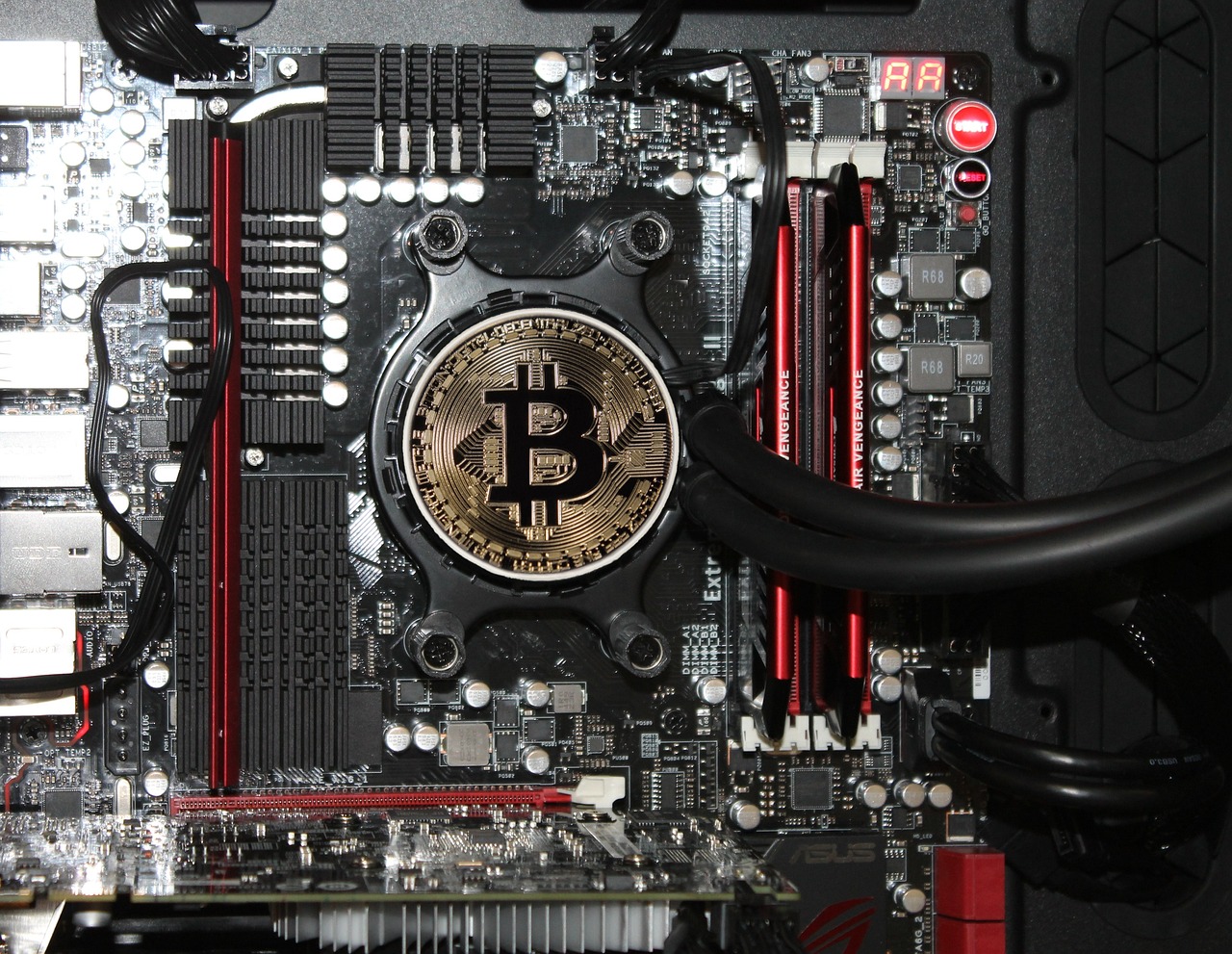
Smart Contract Vulnerabilities
In the rapidly evolving world of decentralized finance (DeFi), smart contracts play a pivotal role in automating transactions and managing protocols like Dfyn. However, with great power comes great responsibility, and the vulnerabilities associated with these contracts can pose significant risks to users. Imagine a beautifully crafted house built on a shaky foundation; that’s what a vulnerable smart contract can be like in the DeFi landscape. One minor flaw in the code can lead to devastating consequences, including loss of funds and exploitation by malicious actors.
Smart contracts are essentially self-executing contracts with the terms of the agreement directly written into code. While they eliminate the need for intermediaries, they are not immune to flaws. Common vulnerabilities include:
- Reentrancy Attacks: This occurs when a function makes an external call to another contract before it resolves its own state, allowing the external contract to call back into the original function and potentially drain funds.
- Integer Overflow and Underflow: These bugs happen when calculations exceed the maximum or minimum limits of data types, leading to unexpected behavior, such as negative balances.
- Access Control Issues: If a contract does not properly restrict access to sensitive functions, it can allow unauthorized users to manipulate the contract.
The importance of conducting thorough security audits cannot be overstated. These audits are like a safety net, meticulously reviewing the code for potential vulnerabilities before the contract goes live. Dfyn, for instance, prioritizes security by engaging reputable third-party auditors to evaluate their smart contracts. This proactive approach helps in identifying and rectifying weaknesses, thereby building user trust.
Moreover, the community plays an essential role in maintaining the security of the Dfyn platform. Users are encouraged to report any suspicious activities or potential vulnerabilities they encounter. This collaborative effort can significantly enhance the overall security posture of the platform.
In conclusion, while smart contracts are a cornerstone of DeFi platforms like Dfyn, they come with their own set of challenges. Understanding these vulnerabilities is crucial for users to navigate the DeFi space safely. By prioritizing security and engaging in community vigilance, users can mitigate the risks associated with smart contracts and enjoy the benefits of decentralized trading.
- What are smart contracts? Smart contracts are self-executing contracts with the terms of the agreement directly written into code, automating transactions without intermediaries.
- How can I protect myself from smart contract vulnerabilities? Always conduct thorough research, use platforms with security audits, and stay informed about potential risks in the DeFi space.
- What is a security audit? A security audit is a comprehensive review of a smart contract's code to identify vulnerabilities and ensure its integrity before deployment.
Frequently Asked Questions
- What is Dfyn?
Dfyn is an innovative automated market maker (AMM) that enhances decentralized trading by allowing users to trade without the need for traditional order books. It offers unique features like liquidity pools, yield farming opportunities, and cross-chain capabilities that make trading more efficient and engaging.
- How do automated market makers work?
Automated market makers function by using smart contracts to create liquidity pools where users can trade tokens directly. Instead of matching buyers and sellers, AMMs use algorithms to determine prices based on the liquidity available in the pools, making trading seamless and decentralized.
- What are liquidity pools?
Liquidity pools are collections of tokens locked in a smart contract that facilitate trading on an AMM platform. Users can provide their tokens to these pools in exchange for rewards, helping maintain market stability while earning passive income through transaction fees.
- What is yield farming on Dfyn?
Yield farming is a way for users to earn rewards by providing liquidity to Dfyn's liquidity pools. By staking their tokens, users can earn additional tokens as rewards, making it an attractive option for those looking to maximize their returns in the DeFi space.
- How does Dfyn support cross-chain trading?
Dfyn's cross-chain functionality allows users to trade assets across different blockchain networks seamlessly. This feature enhances liquidity and user experience by enabling traders to access a broader range of assets without the need for complex swaps or exchanges.
- Is Dfyn user-friendly for beginners?
Absolutely! Dfyn is designed with a user-friendly interface that caters to both novice and experienced traders. Its intuitive layout and easy navigation make it simple for anyone to start trading and providing liquidity without feeling overwhelmed.
- What are the risks associated with Dfyn?
While Dfyn offers numerous benefits, users should be aware of potential risks, such as impermanent loss, smart contract vulnerabilities, and market volatility. Understanding these risks is crucial for making informed decisions and protecting your investments.
- What is impermanent loss?
Impermanent loss occurs when the value of assets in a liquidity pool fluctuates, causing potential losses compared to simply holding the assets. Dfyn users can mitigate this risk by employing strategies like diversifying their liquidity provision or monitoring market conditions closely.
- How does Dfyn ensure the security of its smart contracts?
Dfyn prioritizes security by conducting regular audits of its smart contracts to identify and fix vulnerabilities. These audits help protect user assets and maintain trust in the platform, ensuring a safer trading environment for everyone.



















